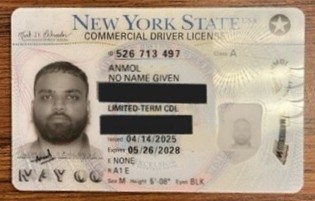Pictured: Oklahoma Flag
Oklahoma History Lesson - Early Influences on Oklahoma Politics
By Steve Byas
Today, Oklahoma is widely known as a “red” state, or Republican bastion. All statewide office holders are Republican, and the Legislature is overwhelmingly Republican. But it was not always so.In fact, Oklahoma did not even elect a Republican governor until 1962, when Henry Bellmon bested Democrat W.P. Bill Atkinson. In the Harding landslide of 1920, Republicans captured the Oklahoma House of Representatives, but that was quickly reversed in 1922. Both houses remained reliably Democrat for the rest of the 20th century. When the Oklahoma Constitution newspaper began rating the Oklahoma Legislature in 1979, there were only about 20 members of the 101-member House who were Republican, and the 48-member Senate had less than ten. (Of course, back then, the Republicans tended to be more conservative than the vast majority of Republicans today. At that time, there were some moderate to conservative Democrats, as well, with some even making out Top Conservative list. Today, every Democrat in the Legislature is very far to the Left).
When Oklahoma Territory was launched with the famous Land Run on April 22, 1889, the Republican Party ran the White House, and the territorial governors were all Republican (except for one, appointed by Democrat President Grover Cleveland in 1893). The territorial legislature met in Guthrie – then a Republican stronghold in the territory.
But, as Bob Dylan famously said, The Times They are a Changing. In the late 19th century, new political winds were affecting the politics of the United States, Oklahoma included. While Grover Cleveland was a true conservative president, the Democratic Party rejected that conservatism in 1896. Populism and progressivism were becoming much more dominant.
By the early 1900s, following the assassination of Republican President William McKinley by a communist, both political parties were greatly impacted by the “Progressive Era.” Republican Theodore Roosevelt, a progressive who believed in the expansion of governmental power, was now in the White House, and the progressive movement had a strong hold on the Democratic Party.
In 1906, the Oklahoma Constitutional Convention met in Guthrie, and under the leadership of convention president William H. Murray, wrote a state Constitution heavily influenced by that progressive movement. Republicans generally opposed much of what was in the document, which no doubt hurt the party’s electoral chances in the first governor’s race. Oklahomans were weary of almost two decades as a territory, and were ready to become a state, and did not like the Republican opposition to the Constitution, that would make that happen.
Another thing that hurt the Republicans in the early years of statehood was Republican Party opposition to segregation of the races, while the Democratic Party’s leaders, like Murray, were all for it. Murray, married to the niece of the governor of the Chickasaw Indian tribe, finessed the issue by inserting language into law that considered the Native Indian population “white” for purposes of the segregation law.
The state of Oklahoma was the fusion of two territories – Oklahoma Territory (mostly western Oklahoma) and Indian Territory (mostly eastern Oklahoma). The settlement patterns also influenced the early years of Oklahoma’s history. Those who settled the far northern parts of Oklahoma west of the Osage Nation were largely from Kansas, a Republican state. Even today, Republicans who populate northern Oklahoma to the Panhandle, west of Osage County, are generally a more moderate type of Republican, as was seen in Kansas then and now.
Southwest Oklahoma, south of I-40 today, was a different story, with many of those settlers coming from Texas – a Confederate, and thus Democrat, area. Southeastern Oklahoma was settled by more Democrats, from Texas and Arkansas. Those areas were so Democrat that it was long known as “Little Dixie.” Then, there is northeastern Oklahoma. This area was settled by mostly southern Democrats, many from Arkansas and southwestern Missouri.
Of course, these are generalizations. Others tended to come from Alabama, Mississippi, and Tennessee, hardly bastions of the Republican Party until the last several decades.
While it took until the 21st century for Republicans to achieve their present dominance in Oklahoma, the seeds of this shift were planted in the era of the New Deal and Franklin Roosevelt. While FDR was generally popular in the Sooner State, many prominent Democrats such as Governor Leon Phillips and former Governor William H. Murray became vocal opponents of Roosevelt’s leftward drift of the Democratic Party.
As the Great Depression dragged on, and FDR began to campaign against fellow Democrats who opposed him on key issues such as Roosevelt’s effort to pack the Supreme Court with yes-men, cracks in the Democratic Party dominance began to show up from time to time. Republican Dwight Eisenhower carried the state twice in the 1950s, followed by Richard Nixon in 1960, and Gerald Ford in 1976. Then came Ronald Reagan in 1980 and 1984. His popularity with younger Oklahomans has carried over to contemporary times, as these admirers of Reagan are now drawing Social Security, but still voting Republican.
In the end, the present Republican hegemony is not so much that Republicans today are so great, but that Democrats are so bad. Areas in which Democrats once dominated – rural Oklahoma – are not only Republican, they are heavily deep red.
Steve Byas teaches Oklahoma History at Randall University in Moore, Oklahoma.










Latest Commentary
Thursday 30th of October 2025
Thursday 30th of October 2025
Thursday 30th of October 2025
Thursday 30th of October 2025
Thursday 30th of October 2025
Thursday 30th of October 2025
Thursday 30th of October 2025
Thursday 30th of October 2025
Thursday 30th of October 2025